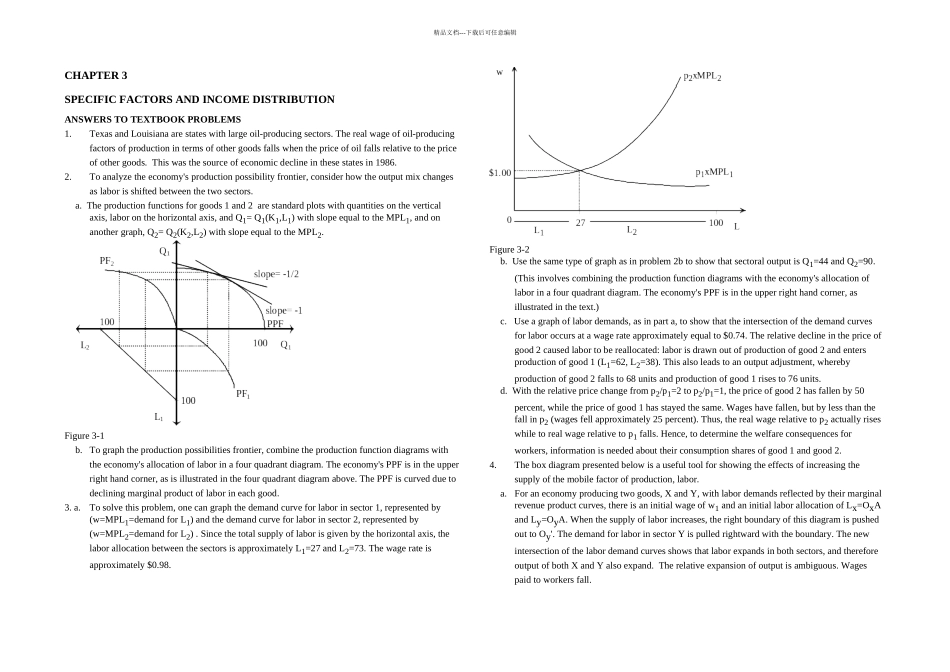精品文档---下载后可任意编辑LABOR PRODUCTIVITY AND COMPARATIVE ADVANTAGE: THE RICARDIAN MODELANSWERS TO TEXTBOOK PROBLEMS1. a. The production possibility curve is a straight line that intercepts the apple axis at 400 (1200/3) and the banana axis at 600 (1200/2).b. The opportunity cost of apples in terms of bananas is 3/2. It takes three units of labor to harvest an apple but only two units of labor to harvest a banana. If one foregoes harvesting an apple, this frees up three units of labor. These 3 units of labor could then be used to harvest 1.5 bananas.c. Labor mobility ensures a common wage in each sector and competition ensures the price of goods equals their cost of production. Thus, the relative price equals the relative costs, which equals the wage times the unit labor requirement for apples divided by the wage times the unit labor requirement for bananas. Since wages are equal across sectors, the price ratio equals the ratio of the unit labor requirement, which is 3 apples per 2 bananas.2. a. The production possibility curve is linear, with the intercept on the apple axis equal to 160 (800/5) and the intercept on the banana axis equal to 800 (800/1). b. The world relative supply curve is constructed by determining the supply of apples relative to the supply of bananas at each relative price. The lowest relative price at which apples are harvested is 3 apples per 2 bananas. The relative supply curve is flat at this price. The maximum number of apples supplied at the price of 3/2 is 400 supplied by Home while, at this price, Foreign harvests 800 bananas and no apples, giving a maximum relative supply at this price of 1/2. This relative supply holds for any price between 3/2...


